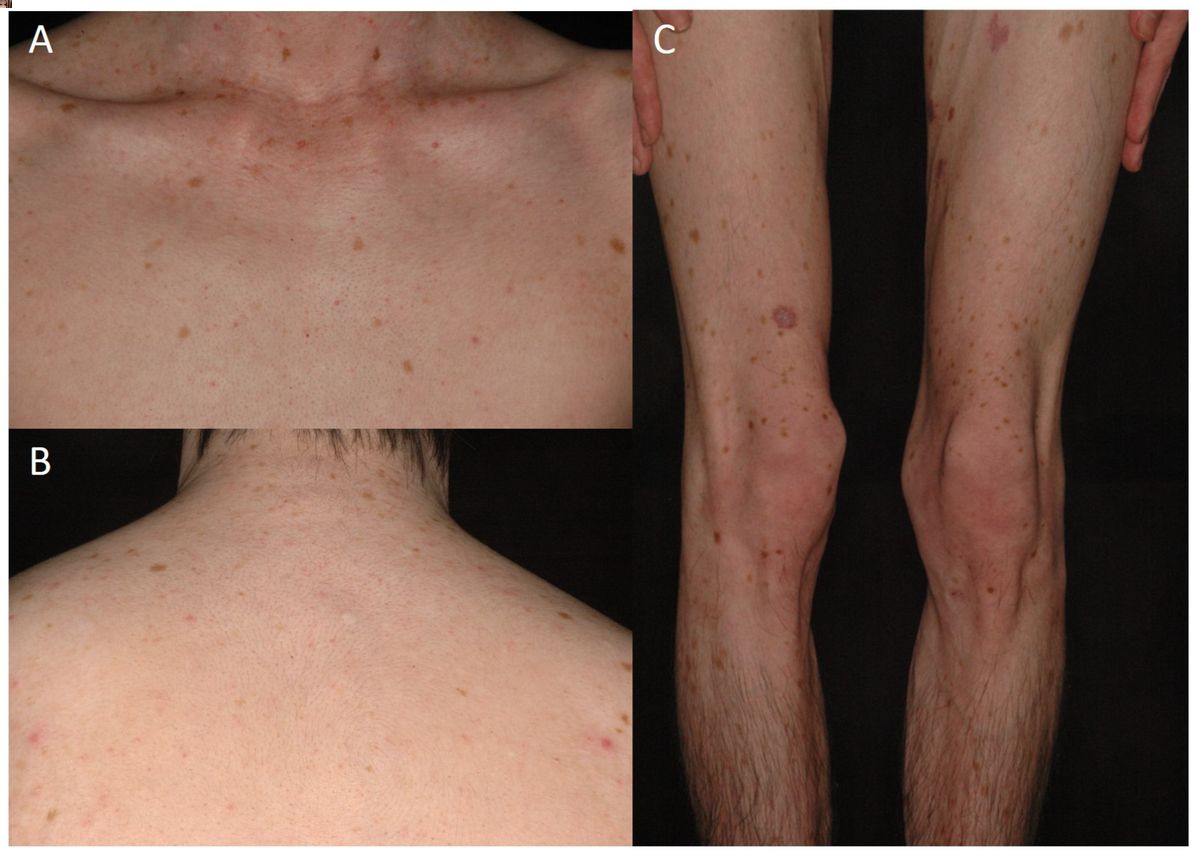
Macules are small, flat spots on the skin that can be either hypopigmented (lighter than the surrounding skin) or hyperpigmented (darker than the surrounding skin). These spots can be hereditary or congenital, meaning they are present from birth. Understanding these skin changes is important because they can be indicators of various medical conditions. Some macules are harmless, while others might signal underlying health issues. Knowing the difference can help in seeking appropriate medical advice. In this post, we'll explore 25 intriguing facts about macules, shedding light on their causes, types, and what they might mean for your health.
Key Takeaways:
- Macules are flat, discolored areas of skin that can be either lighter or darker than the surrounding skin. They are often harmless and can be caused by various factors, including genetics and skin damage.
- Some macules are present at birth or passed down through families, indicating genetic conditions. Understanding the different types of macules can help identify potential health issues and seek appropriate care.
Understanding Macules
Macules are flat, distinct, discolored areas of skin. They can be congenital (present at birth) or hereditary (passed down through families). These spots can be either hypopigmented (lighter than the surrounding skin) or hyperpigmented (darker than the surrounding skin). Let's dive into some fascinating facts about macules.
-
Macules are flat: Unlike other skin lesions, macules do not have any elevation or depression. They are simply changes in skin color.
-
Size varies: Macules can be as small as a pinpoint or several centimeters in diameter.
-
Common in many conditions: Macules are seen in various skin conditions, including vitiligo, freckles, and birthmarks.
-
Not always harmful: Most macules are benign and do not indicate any serious health issues.
-
Can be hereditary: Some macules, like café-au-lait spots, can run in families.
Hypopigmented Macules
Hypopigmented macules are lighter than the surrounding skin. They can be caused by a variety of factors, including genetic conditions and skin damage.
-
Vitiligo: A condition where the immune system attacks pigment cells, leading to hypopigmented macules.
-
Pityriasis alba: Common in children, this condition causes light patches on the face.
-
Tuberous sclerosis: A genetic disorder that causes hypopigmented macules among other symptoms.
-
Post-inflammatory hypopigmentation: Occurs after skin inflammation or injury, leaving lighter spots.
-
Idiopathic guttate hypomelanosis: Small, white macules that appear on sun-exposed areas, often in older adults.
Hyperpigmented Macules
Hyperpigmented macules are darker than the surrounding skin. They can result from increased melanin production or other factors.
-
Freckles: Small, brown macules that become more prominent with sun exposure.
-
Lentigines: Also known as liver spots or age spots, these are common in older adults.
-
Melasma: Dark patches that appear on the face, often due to hormonal changes.
-
Café-au-lait spots: Light brown macules that can be a sign of neurofibromatosis if numerous.
-
Post-inflammatory hyperpigmentation: Dark spots that remain after an injury or inflammation heals.
Congenital Macules
Congenital macules are present at birth and can be either hypopigmented or hyperpigmented. They often remain throughout life.
-
Mongolian spots: Blue-gray macules commonly found on the lower back of infants, especially in those of Asian or African descent.
-
Congenital melanocytic nevus: A type of mole present at birth, which can vary in size and color.
-
Nevus depigmentosus: Hypopigmented macules present from birth, often mistaken for vitiligo.
-
Port-wine stains: Red or purple macules caused by abnormal blood vessels, present at birth.
-
Becker's nevus: A large, hyperpigmented macule that usually appears during adolescence.
Hereditary Macules
Hereditary macules are passed down through families and can be a sign of genetic conditions.
-
Peutz-Jeghers syndrome: Characterized by dark macules on the lips, mouth, and fingers, along with gastrointestinal polyps.
-
Neurofibromatosis: Causes multiple café-au-lait spots and other skin changes.
-
Familial atypical multiple mole melanoma (FAMMM) syndrome: Leads to numerous atypical moles and an increased risk of melanoma.
-
Xeroderma pigmentosum: A rare condition causing extreme sensitivity to UV light and numerous hyperpigmented macules.
-
Albinism: A genetic condition resulting in hypopigmented macules due to a lack of melanin production.
Final Thoughts on Macules
Macules, whether hereditary, congenital, hypopigmented, or hyperpigmented, offer a fascinating glimpse into the complexity of human skin. These small, flat spots can tell us a lot about our genetics, health, and even our environmental exposures. Understanding macules helps in early detection of various skin conditions and diseases. It's crucial to consult a dermatologist if you notice any changes in your skin's appearance. Regular check-ups can prevent minor issues from becoming major concerns. Knowledge about macules empowers you to take better care of your skin. So, keep an eye on those spots, stay informed, and don't hesitate to seek professional advice when needed. Your skin is your body's largest organ; it deserves attention and care.
Frequently Asked Questions
Was this page helpful?
Our commitment to delivering trustworthy and engaging content is at the heart of what we do. Each fact on our site is contributed by real users like you, bringing a wealth of diverse insights and information. To ensure the highest standards of accuracy and reliability, our dedicated editors meticulously review each submission. This process guarantees that the facts we share are not only fascinating but also credible. Trust in our commitment to quality and authenticity as you explore and learn with us.
